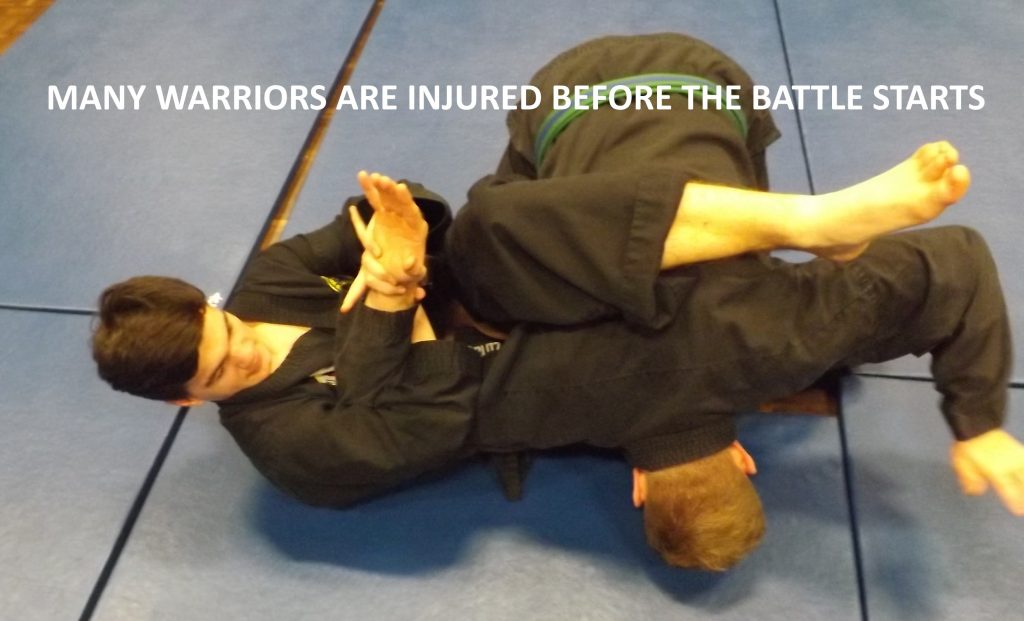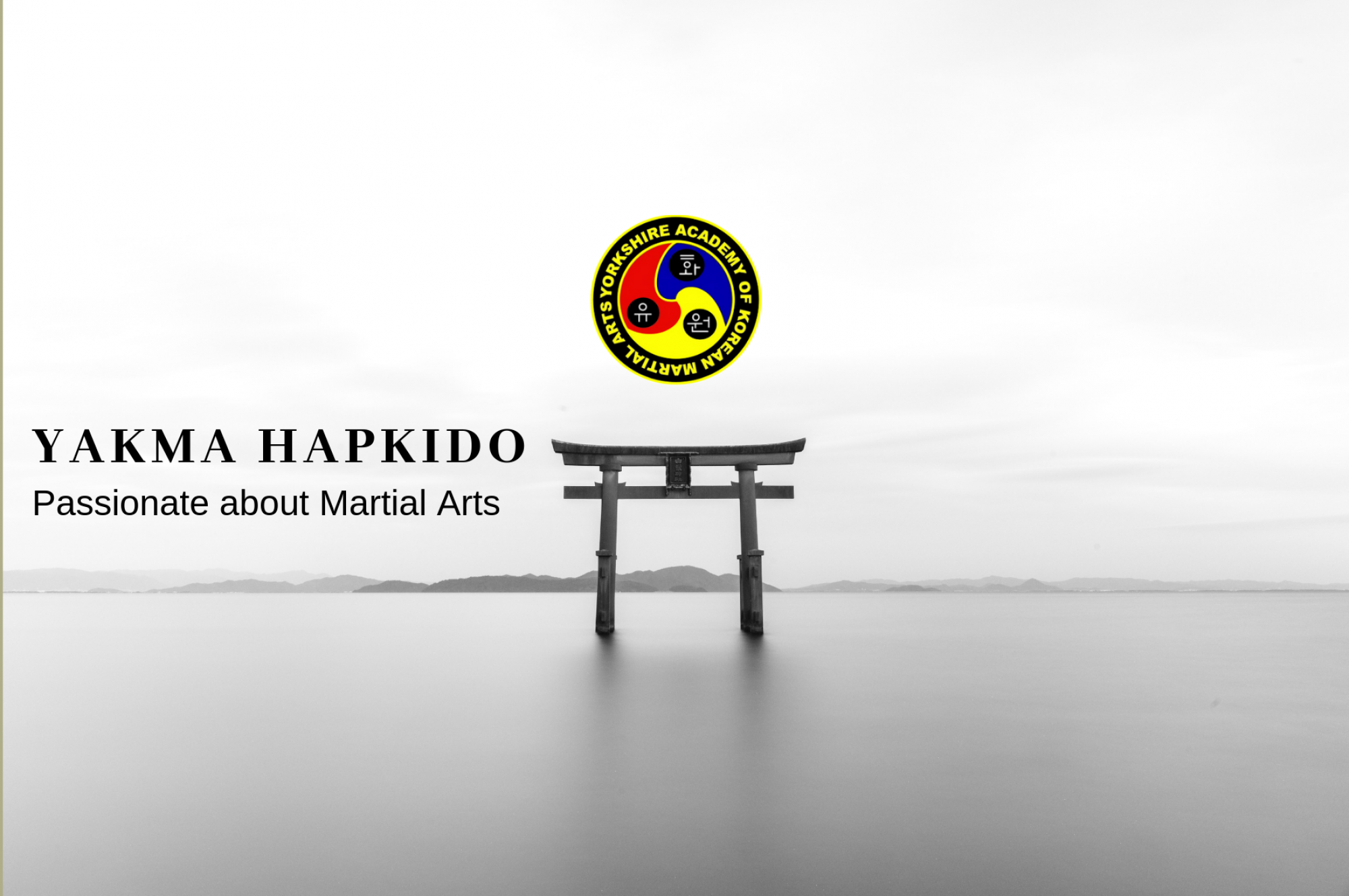
The level of contact in martial arts is a very controversial subject. Is full contact training necessary to learn to fight well under real pressure? Opinions vary but in my opinion if someone is preparing for a competitive fight or may need to fight flat out as part of their job, such as a door security worker they need to know what being hit full on feels like. They also need to be conditioned to take a hit. Ricky Hatton said in one of his books that the hardest part of coming back after a layoff is learning to take a shot again.
This does not mean that people training for real violence should practice full contact sparring every session though. It is a very ageing way of training and fighting and a lot of fighters have had their careers cut short through injury or just wear and tear. Hence the title of this article “Many warriors are injured before the real battle starts”. This saying apparently comes from a Chinese martial arts school that practiced in a very controlled manner.
Body protection can be a good way to allow people to deliver their shots without doing damage. Taken to its extreme this method includes “Redman suits”. These are very protective but very cumbersome. They may be great for practicing full on attacks in self defence classes but the person in them is restricted by the size and bulk of the suit so they cannot offer realistic resistance. Sparring protective gear is another solution, it offers some protection and is light enough to allow both partners to spar normally.
However wearing protection is not going to prepare you for taking a shot so in my opinion the people who are training for full contact situations or real life violence should have some experience of full contact without protection, though personally I draw the line at bare knuckle.
Most of the martial artists I know and have met don’t come into this category. They train for fitness, pleasure and many other reasons but they are not professional fighters. They have to go to work the next day and that could be difficult with a broken wrist or rib. It also might not be good for their professional image if they have black eyes and a broken nose. Also most bosses won’t be too happy with people having time off due to training injuries. Add to this the fact that some people won’t get paid if they are off work and we have a pretty conclusive argument for using a bit of common sense when training.
I was once in an open session the day before a grading, my instructor was helping me with my techniques. While we were warming up my instructor was hurling himself into the mats as hard as he could to practice his break falls. There was an older Aikido student practicing his break falls very stylishly and gracefully, the type who emphasises the art in martial arts. He asked my instructor why he practiced in such a hard way. My instructor’s reply was quite dismissive claiming he knew what he was doing. The older Aikido student replied “That’s what I thought until I had to have both knees replaced.”
Consider the amount of training time that can be lost through injury. Certain injuries can take you out of class for a year or so. Some injuries will finish your martial arts training for good. Whatever your opinions on the level of contact are it’s difficult to argue that no training is better than sparring with light to medium contact. While you’re convalescing your class mates will be improving and progressing. A lot of martial artists are in it for life and ageing joints are easier to injure. Also as time goes on injuries take a lot longer to heal. For these reasons it makes sense to keep contact to a lower level. You don’t have to go flat out to improve timing and skills, in fact in many circumstances it is counter productive.
When applying joint locks there are two schools of thought. One that applies every technique hard and fast. The second focuses on applying techniques in a slow controlled and progressive manner so the partner has time to tap out before damage is done. I personally come down very strongly on the side of the latter method. The supposed logic behind the hard and fast version is that it is practical and teaches defence in a realistic manner. Joint locks by nature are designed to cause maximum damage from a minimal amount of pressure enabling smaller and weaker people to defend themselves against larger opponents. Applying a technique designed to cause pain and damage with a small amount pressure as hard as you can is asking for trouble. Consider the potential damage to a small joint when applying a technique hard and fast, the tendons, ligaments and small bones are all at risk. We are training to learn to defend ourselves and enhance our health and well being, not to cause damage to each other. Even if there is no immediate damage the long term effect of this type of training is going to take its toll. I do however believe that pressure should be applied every now and again to ensure the technique works and also to allow you to get used to experiencing pain, so you know you won’t fall apart when the heat is on. This pressure should be applied slowly and gradually to give your partner chance to tap out before damage is done.
I like the analogy of squeezing toothpaste out of a tube. It is done smoothly and in a gradual controlled way. If you squeeze too hard and fast there will be toothpaste all over the place. Once you’ve done this you can’t undo the mistake and put it back in the tube. The same applies to excessive joint lock pressure, no amount of apologies will heal a broken wrist, you’ve put your partner out of action for a few months.
The ability to apply just the right amount of pressure to cause pain without damage comes with experience and until you are sure you have mastered this you should err on the safe side
I agree that when sparring using strikes there is sometimes a case for flat out full contact but I personally can’t think of any advantage to short or long term abuse of your joints. Even when you finish training you will may well have to live with the consequences.
It is down to the individual to decide what level of contact they want to train at. While the majority of people training will stop at least slightly short of all out full contact there are people who love it so much that they are willing to risk the chance of long term damage. I once spoke to a kickboxer who was a very successful competitor. Being extremely dedicated, before work every day he would go down to the gym before it was open and let himself in with a key the owner had given him. After a heavy bag workout he would go to work and return later in the day to train again. On one occasion he told me that he had arthritis in both wrists in his early twenties. Another time I bumped into him and asked how his training was going. He said that he was having to take several months off due to getting a head shot during a fight that had caused internal bleeding in his brain. I asked him what his plans were after the compulsory layoff. He looked a bit confused as if he didn’t understand the question then said “Get ready for my next fight”.
Martial arts has its own meaning for everyone and I have respect for people who train at all levels of contact.
The people that I have no time for are the ones who join a light or medium contact class and then go in hard or stick to the guidelines while the instructor is watching and then take cheap shots when he turns his back. The purpose of sparring is to improve your technique and timing not to damage or dominate your partner. However hard your style some form of rules will be in place because it isn’t a street fight. Fighting is a dangerous game and the rules are there to ensure that the participants are as safe as they can be under the circumstances and also to create a level playing field.
The problems start when someone comes along who doesn’t or doesn’t want to understand the concept of sparring for mutual benefit and has to win at all costs. If they’re being outclassed they resort to cheating or excessive contact when they think they can get away with it. They’ll often justify behaviour like this by saying it’s realistic. If it’s realism they want they might be better served in a street fight. There is no place for this type of behaviour when sparring.
